Needs for Season Covid-19: 2020-2021
Mask
If you plan to do any in-person singing, you should have a mask. (If you plan only to sing from home, it’s not an issue)
Depending on space and ventilation it may not be required by me, and in that case you will always have the right to wear it. If wearing a mask is required by Fraserview, then we will mask.
Your mask should be well-fitting, comfortable for wear for the length of a rehearsal. It should not be such a close seal as an N-95 medical mask, but it should fit closely so that there is no free passage of air round the edges. A face-shield is not an acceptable substitute, unless you have one that closes at the back and the bottom.
You may decide if it is a shaped mask or one sewn with pleats for fit. It should not be so loose-fitting that when you breathe in, the mask collapses inwards. Both Kate and Cathy have a pattern for a “performers mask”, extended beyond the front of the face by the use of zip-ties.
Decide in good time how it fastens – whether you want to deal with elastics round your ears, or straps/tapes.
If we rehearse in person, it will likely be for shorter periods, so you will be able to go outside for some fresh air, and change your mask if you prefer.
Computer
Phone or tablet is possible, but we will be doing things that may need you to read music from a screen-share, and that’s a little rough with a phone screen! Laptop recommmended.
A/V
Headphone or earbuds will help to filter out external sound – your choice. A microphone will improve your sound, though depending on your system, you may manage perfectly well with the system mic. If we ever got to creating a virtual choir recording, you would need one system to play the foundation recording & click-track, and another to record on (I would play it on my computer and record on my phone). Most people have an in-system web-cam – but with an older computer, you may need an external one.
Keyboard
I know not everyone has keyboard skills, but this is a good time to develop that aspect of learning to work on your music. You don’t need to become a great pianist, but you can learn enough to help yourself. If you don’t have a piano at home, think about getting an electronic keyboard. It doesn’t need to be a full-88-key one, nor does it need a wide range of sounds. You can probably find something pretty cheap on MarketPlace or Craigslist. Just make sure it works before you buy it!
Space
This may be less easy – your family’s been used to you leaving for choir, and now you may be staying home for some of the time. Find a space where you can stand and sing, and still see the computer screen (and have the camera seeing you). Make sure the keyboard is within reach and the lighting is good. (I have invested in a Ring Light on a tripod – a very even light-source)
Have an upright chair that allows you to have good singing posture – be in camera range (even if the means you have to move the camera). I will probably be asking you to stand for warmups and for vocal training, but let you choose for other things.
If you live in an apartment consider how sound carries and whether you can mitigate that with screens, carpeting or anything like that. (This will be an issue for me, and I will need to negotiate with my next-door neighbours.)
Timing
We’ve been used to a two-hour, fairly hard-working rehearsal every Tuesday, with a concert goal in sight. Now we have no calendar goal, and two hours on Zoom will give us all Zoom-brain. I plan to work for no more than 90 minutes – perhaps less, we’ll have to see how we feel – and when we end, to leave open mic for visiting and chat for those who want.
Live rehearsal
When I first wrote this, it was looking less and less likely – but research IS happening, and we’ll see what it tells us.
WE WILL ONLY REHEARSE LIVE IF WE CAN DO SO SAFELY
If we rehearse live it will be no more than twice a month, and we will find a way of live-streaming or at least recording so that those of you at home can also sing with the choir.
Dr Michael Schwandt recommended “bubble” groups of about 6. These groups should be consistent from session to session, for the sake of possible contact tracing. I am hoping that by spacing, say, 6 groups in the pews of Fraserview, that you will hear each other well enough to sing.
Considerations: “best” would be an SATB grouping, with a couple of extra voices. Given that some of our 6 tenors would prefer not to meet in person just yet, that’s not going to happen! Many people may be more comfortable with a single-voice bubble – all sopranos, for instance. Your bubble will likely not be a satisfactory musical unit by itself, though. However, the group as a whole needs to be a sufficiently balanced group, so that we can actually produce a good balanced sound – it won’t work if, for instance, we have only five sopranos singing live, even if all the others are singing at home.
If it’s allowed to us by Fraserview, and if you want to do it, I will help facilitate it; I will not insist that everyone must be there, and we will need to follow all the protocols decreed by the church.
What are the “cons”? For this to work, each bubble would probably need to be mic’d, so that you can hear each other and those at home can hear. It would need good wi-fi to send it for live-streaming for those at home. We would either need to buy/rent equipment, and have someone run it, or pay Fraserview extra to do so.
There are still many questions!
Singing outside
This would not be an option for rehearsal unless everyone could attend, because it’s almost impossible to do the livestream thing.
Just singing for fun, some of us singing at Toby’s farewell discovered the downside of outdoor singing – which is basically that the sound goes nowhere; there’s nothing for it to resonate off, and we can’t hear each other. I’ve been talking to Carrie Tennant (Vancouver Youth Choir) and she’s booked a parkade level at UBC for rehearsal – open space, but with resonance from hard surfaces. She’s also taken small groups of singers into forest area, and says that tree resonance can be an exciting experience – but not a rehearsal situation. If anyone has ideas....
So what can we do?
As you probably know, Zoom is likely the best and most accessible platform we have for now – but it’s not satisfactory for singing together because of latency issues. There is work happening in the US and in Germany but it won’t be with us any time soon. So a lot of what we will do will depend on you developing the comfort with singing at home alone, with my voice coming through, A typical rehearsal might include
warm-ups, with me modelling and you singing
singing some solo repertoire – this may have to be with recorded accompaniment, since if as accompanist plays live, we would immediately have latency problems. I will need to experiment to see if digital piano, directly into the system, would be better than acoustic piano
sight-reading – and tying this into some keyboard basics. We could work with solfege, but I think it’s probably more helpful to know where physical notes are, and to be able to work on intervals
Singing some choral repertoire – this would mean some sectional work, and then probably singing against a recording. Re-singing things we know (though that will depend on how long we’ve been with the chorus); learning something new
Watching choir performances together, and discussing either the repertoire they sing, or the way they perform
perhaps some score study – how to mark your score, how to analyse
an occasional fun evening – a singalong, a cabaret session or a mini-concert
Another issue we will have to allow for is that of permissions... currently, when we buy our music, we have the right to sing it, but when we perform it, we have to pay performing rights (which we do through SOCAN). Now we are going to have to be dealing with recording rights, and synch rights if we are live-streaming. Life gets more complicated (and not cheap!)
Virtual Choir
This can only be a part of our choral year, though a number of people have asked about it.
To begin with, Virtual Choir is not really a choral experience – it’s a creation of individual singers welded together by a sound engineer.
1. A foundation track is created; accompaniment and vocal parts, with click-track if needed. Work for me and an accompanist...
2. We learn notes in rehearsal – mostly sectional rehearsal if we’re working in Zoom
3. Singers record themselves individually, playing the foundation track on one appliance and recording on another – for instance, I would play the track on my computer and record on my phone.
4. Tracks are collected and then music and video are separately edited and then compiled. This is NOT a quick process! and not something that I, personally, have time to do.
I’m thinking that if we are able to VC anything, it should be a short Christmas program for seniors residences, since they won’t be able to have visiting groups. We could combine some of the World Christmas CD (from, unbelievably, 15 years ago) with other VC rep, perhaps from our international Christmas program in 2015
There are videos available to tell you how to do the tech of this. I am also working with Vaughn and Carolyn from Phoenix Chamber Choir to offer a couple of BCCF workshops to backup the information in the Phoenix videos. More info at https://bcchoralfed.com/virtualchoir/ If any of you have an interest, please let me know a.s.a.p. If we can’t learn to do it ourselves, then we would need to build a recording tech into our (already strained) budget.
In the meantime, I’m deep in BCCF Roundtable sessions with choirs across the province. We’re all in this together!
Planning continues....
Brigid







